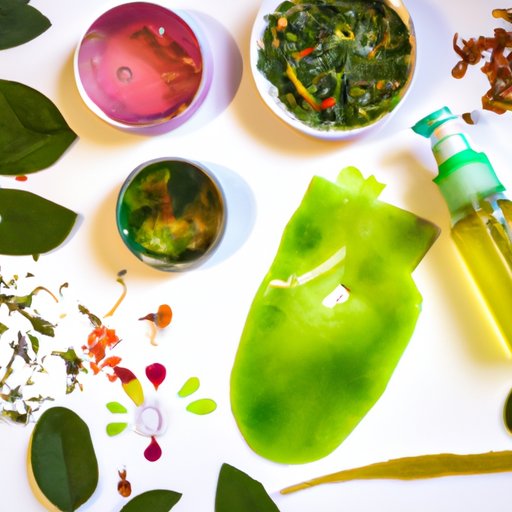
I. Introduction
Blood blisters are a common skin injury that can occur when the skin is pinched or rubbed against a hard surface. These blisters are filled with blood and can be painful, depending on the size and location. Although they can go away on their own, there are steps you can take to minimize discomfort and speed up the healing process.
II. Home Remedies
If you’re someone who prefers natural remedies, there are several options to treat blood blisters:
1. Applying aloe vera
Aloe vera has anti-inflammatory properties and can help speed up the healing process. Apply a small amount of aloe vera gel directly to the blister and cover with a bandage. Do this daily until the blister fades.
2. Tea tree oil
Tea tree oil has antiseptic properties that can keep the blister from becoming infected. Dilute the oil with a carrier oil, such as coconut oil, before applying it to the blister. Use a cotton swab to apply the oil to the affected area. Repeat twice a day.
3. Witch hazel
Witch hazel has natural astringent properties that can help dry out the blister. Apply a small amount using a cotton ball and cover with a bandage. Repeat three times a day until the blister disappears.
4. Essential oils
Lavender oil and frankincense oil can help reduce inflammation and promote healing. Dilute two drops of essential oil with a carrier oil and apply to the affected area. Cover with a bandage and repeat twice a day.
III. Medical Treatment
If home remedies aren’t working, there are medical treatments that can be done:
1. Draining them
If the blood blister is causing discomfort and is large, the doctor may recommend draining it. The doctor will make a small incision with a sterilized needle and remove the fluid. Avoid doing this at home.
2. Using a needle to relieve pressure safely
If the blister is causing discomfort and you are unable to get to a medical professional, you can use a sterilized needle to relieve pressure. Insert the needle at the edge of the blister and gently press the fluid out. Apply antiseptic to the area and cover with a bandage.
3. Over-the-counter treatments
Over-the-counter treatments, such as hydrocortisone cream or a bacterial ointment, may be recommended by your doctor to help speed up the healing process.
IV. Prevention
Prevention is the best way to avoid blood blisters from forming:
1. Wearing proper-fitting shoes
Make sure your shoes fit correctly and are comfortable. Shoes that are too tight or too loose can cause friction and blisters.
2. Protective gear
Wear protective gear, such as gloves or knee pads, when participating in sports or work activities that may cause injuries.
3. Using gloves
If you work with your hands or lift heavy objects, wear gloves to prevent blisters from forming.
V. When to Seek Medical Help
Although most blood blisters will heal on their own, there are times when you should seek medical attention:
1. When home remedies aren’t working
If the blood blister has not improved or has become worse after using home remedies, it’s time to see a doctor.
2. When the blood blister is painful
If the blood blister is causing you a lot of pain, the doctor may recommend draining it or providing you with a topical treatment.
3. When the blood blister is large
If the blood blister is larger than a quarter inch in diameter, it may need medical attention. The doctor may need to remove the blister or provide you with a prescription treatment.
VI. Conclusion
Blood blisters can be painful and uncomfortable, but they usually fade away on their own within a few weeks. If you prefer natural remedies, home treatments such as aloe vera or essential oils may help. However, if the blister is causing too much discomfort or does not improve after a few days, it’s important to seek medical attention. Remember, prevention is key – make sure you wear proper-fitting shoes, protective gear, and use gloves when necessary.





